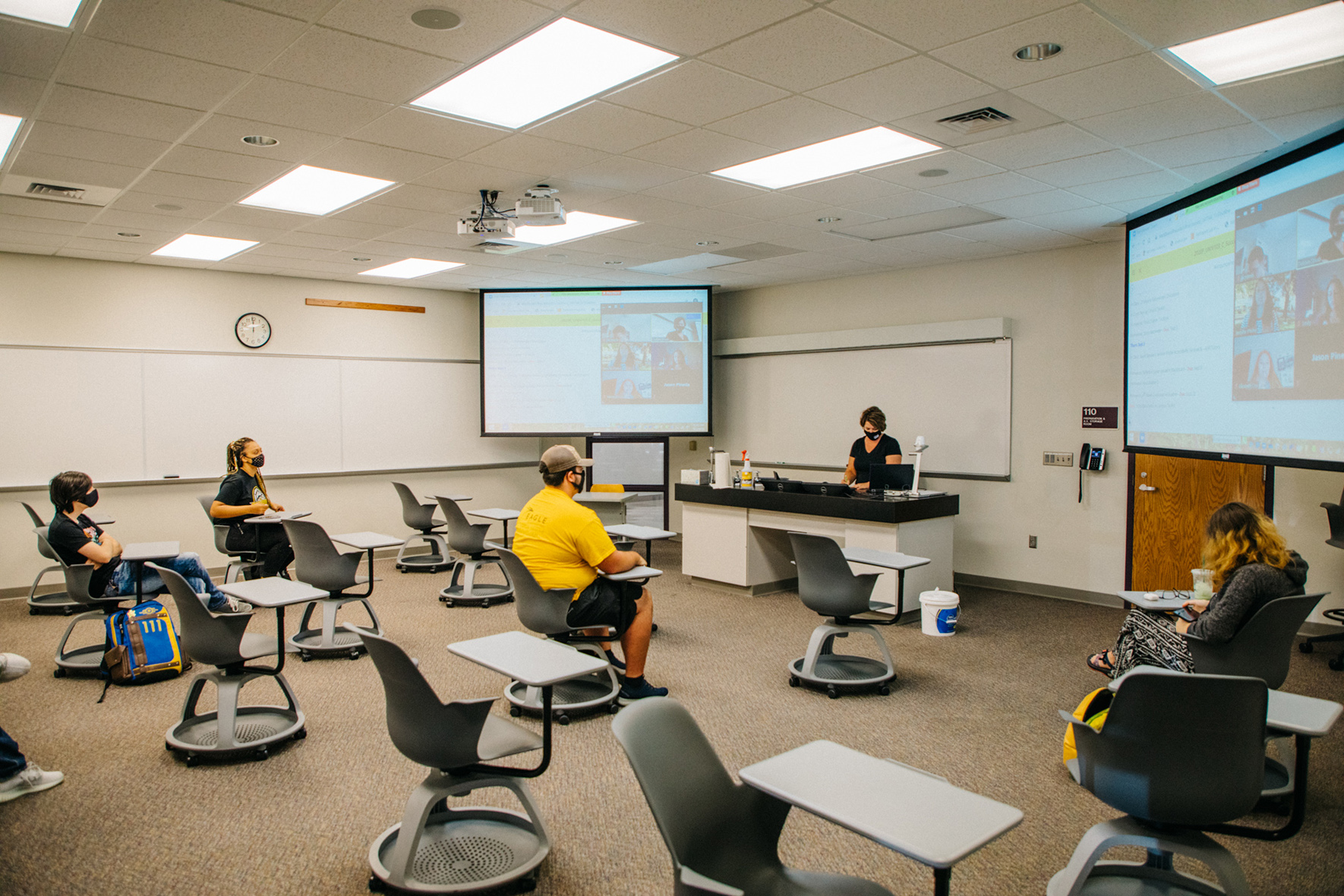COVID-19 response efforts driving new learning technology enhancements

9/8/20
HAYS, Kan. – Fort Hays State University has long been known as a trailblazer in the delivery of online classes. It has taken that pioneer spirit to a new level in response to COVID-19.
In preparation for increased online instruction because of the pandemic, FHSU expanded the use of classroom technology this summer in time for the fall semester. In June, an Academic Affairs Strategic Planning Work Group proposed three different modalities for Fall 2020 course delivery. In addition to the traditional on-campus modality, classes also are being offered totally online as well in a new “hybrid” method.
“We are planning for any number of possibilities, all the while realizing that a portion of every course might need to be delivered online at some point,” said Dr. Andrew Feldstein, assistant provost of Teaching Innovative and Learning Technologies. “We want to make sure that, whatever the modality, we are focusing on the quality of the student experience.”
At the time, hybrid was defined as any course that utilizes campus access and meeting time to complete or supplement some learning outcomes but uses online media to complete other learning outcomes. As the summer progressed this definition began to shift.
“Faculty recognized that there would be occasions when they would need to meet with students online and in a face-to-face classroom at the same time,” Feldstein said. “The types of interaction needed for those two methods are very different, and we needed to determine how best to deal with both groups of students at the same time.”
It turned out that Mike Nease in the Office of Technology Services was already working on this issue.
Nease, enterprise technology support director for TigerTech, and his crew devised a successful formula. New document cameras installed in the classrooms can connect to instructor’s laptops, via USB, and will appear as a second camera in Zoom. In addition to being a traditional doc cam, the new model also serves as a whiteboard surface, and the camera can be turned toward the instructor or audience to serve as a Webcam. Zoom can also record the class with the video uploading to VidGrid for editing and posting.
Jeff Bitikofer, campus audio-visual support specialist, and his team installed doc cameras and capture boxes in virtually all FHSU classrooms. Instructors need only bring with them their laptop and head-worn microphones.
This type of microphone, Nease explained, eliminates feedback in the classroom, allowing the instructor to walk anywhere in the room without audio feedback that can be detected when using lapel microphones.
Now, with the use of a head-worn microphone, a laptop computer, a document camera and a video capture box, instructors are now able to hold class for students both in the classroom and online at the same time. This hybrid modality will make it possible for instruction to continue online without interruption, for example in instances of quarantine – for students or instructors.
This particular method, Feldstein said, is more common at large institutions with big lecture halls that have multiple cameras set up with more elaborate equipment to capture audio and multimedia.
Fort Hays State is much more about the personal experience. But exceptional times call for exceptional measures.
“In the past, we prided ourselves on the simplicity of our classrooms; faculty liked that,” Nease said. “We’re just adding a few enhancement features without interrupting the regular classroom. These components will add a lot of flexibility.”
The teams at TILT and Technology Services collaborated to test and order the equipment to be installed in time for the fall semester. Nease made instruction videos for faculty, and a checkout station was made available for the microphones at Forsyth Library.
“Our people always step up, and this is another example of collaboration across campus, good communication and the willingness to work together,” said Dr. Jill Arensdorf, provost and vice president for academic affairs. “The Tiger Tech and TILT teams have done a fantastic job getting our faculty ready to go this semester, with short notice.”
Nease, who has worked at FHSU for 25 years, is accustomed to finding solutions to challenging technology situations.
“These were timely changes and not just COVID related,” Nease said. “The technology additions we’ve installed will immediately enhance the quality of the teaching and learning experience at FHSU for years to come.”